#afromagic
Text
The Blue is Where God Lives, Sharon Sochil Washington
Or: The Author of this Book is an Anthropologist, and She Really Really Wants You to Notice
I picked this book up off the New Fiction shelf at my library because the inside cover hit one of my prime buzzwords: “Afro-magical realism ”. I was extremely excited about the supposed shapeshifters and time travel and other miscellaneous magic, and on those points, I will say this novel absolutely delivered. I only wish that was what the book was actually about, rather than sort of the circumstances that the book’s plot happens around.
The Blue is Where God Lives is a time bending, inter generational historical fiction novel, telling the story of Blue, a Black woman who has lived a hard life, and comes from a line of Black women who have lived hard lives, as she reels in the fallout of the unimaginable tragedy of losing her daughter in a gruesome murder. As she processes her trauma and tries to understand how she can possibly move on from it, she tells us (and a priest) the story of her life.
I actually found the storytelling quality of these little flashbacks to be the most enjoyable and interesting aspects of the book. Blue has had a difficult and painful life in a lot of ways, and the honest way she speaks about her relationship with her sense of self and her experience as a mother I think really echoes how easy it is for a lot of women, especially those fighting through poverty, to absolutely lose themselves in the strain of trying to provide for others. And I deeply respect that Washington doesn’t mince words about the messiness of those feelings.
Struggling under the burden of unwanted motherhood is a theme of both of the dual storylines in this novel, as Ismay Riguad, one of the other main characters, struggles with many of the same tensions in the year 1843. Interwoven with Blue’s story are snippets of the story of her great grandparents Amanda and Palmer, and Ismay, the white-passing French Royal they befriend. It’s in the past, in their storyline, that the magic really becomes relevant in this text. But it’s also here where Washington starts to self indulge just a touch too much, and lose me. Amanda and Palmer, both Black and light skinned, are abolitionist revolutionaries, using Amanda’s magic and Palmer’s financial privilege in conjunction with the lightened color of their skin to wield great socio-political power, and to outsmart / kill / escape from the vicious white people that try to enslave them and their friends, while liberating as many other enslaved people as they can along the way.
Now, did I enjoy every single scene of these Black people bringing the white slaveholders, murderers and rapists the type of violent, bloody, gruesome justice they deserved? Absolutely. In fact, I would’ve happily read a novel of just Amanda and Palmer doing that for 300 pages. As intense as some of those scenes were, it was sort of comforting to know that the Black people were the heroes of this story, and that despite the violence of the setting, they were going to live to the end.
But here’s where Sharon starts to enjoy herself a little too much: far too many moments of the 19th century plot line feel less like historical fiction and more like historical fanfiction. Just about every famous person who was alive during these time periods gets name dropped in this book, from Karl Marx to Bonnie and Clyde, and they’re always both close personal/influential friends of the main characters and not at all fleshed out as characters themselves. Not to mention, the author puts these characters in the most transparently manufactured settings possible, to provide them an opportunity to dialogue over some specifically anthropological debate. This leaves us with a six page spread of Frederick Douglass and Johann Kant supposedly debating why the enslaved Africans in America don’t just revolt the way they did in Haiti.
It just felt at times like the author was writing a response to a social studies class prompt: “tell a story where three of this unit’s important figures meet for dinner. Be sure to represent each figures point of view accurately, and use at least 5 key words from the word bank”. The arguments she’s making are certainly never wrong, and her primary sources are always used intelligently, but it felt a little aggressively like she needed us to remember her background in anthropology. And it often got in the way of me enjoying her extremely lyrical and poetry like narrative prose, and fantastic storytelling skills.
In the end I stuck it out to the finish for all of the great character work she does with Blue, and the cool magical action with Amanda and Palmer, and because I found the non linear storytelling to be challenging at first but extremely compelling once I got used to it. But it would’ve been less of a chore to get through if it wasn’t trying so hard to teach me something.
Other things…
Whoooollleee lotta sexual assault. Definitely a recurring theme. No graphic descriptions of the act, but almost every woman in the novel is assaulted or at least loses agency over her body at some point or another in her life. There’s also some non trivial mentions of suicide and gore. Good to keep in mind as triggers.
Super Christian, randomly. I mean I know it has God in the title, but for a novel that otherwise leans so heavily into non Western spirituality, bending of reality, and even numerology, it sticks to a pretty prescribed definition of a Christian God.
This author also loooves to repeat herself. Especially that damn simile about memory being like reattaching an arm. Like babes we got it the first three times.
#the blue is where god lives#Sharon sochil washington#book review#booklr#afromagical realism#shapeshifting#magic#historical fiction#generational trauma
0 notes
Text
Love Connection Tea💘
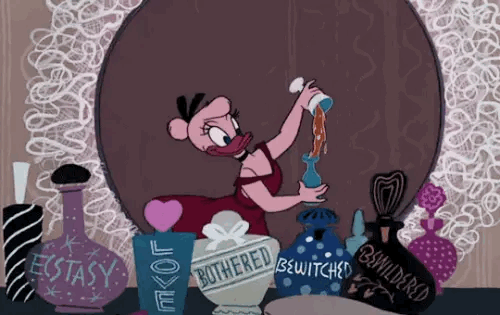
One of my favorite holidays is Valentine’s simply because it’s a time to be indulgent and extra with your loved ones💕 I use this tea to rekindle the love I have for myself and my chosen family, to meet new partners or friends that I’ll vibe with, and to attract that decadent love back. Perfect for a spiritual bath too, the smell will have people all over you~
Hyssop- cleanses and eases
Rose- love drawing
Sorrel- joy and love drawing, boosts sexual energy
Ginger- joy and love drawing, boosts passion and sexual energy
Honey- attracts sweetness in love and life
I burn red/pink candle, some cinnamon sticks, and grab some rose quartz. I’ll reflect on all the love I feel for myself and the faith I have in my relationships with my chosen family. I tap into that irresistible warmth that love gives, transfer that warmth down into my fingertips and direct my intent to my tea as I pray. I give thanks and praise to my Ancestors and Spirit Guides for the unconditional love they give me and invite them to continue to lead me to meaningful relationships.
#happy valentines day babes☺️#love connection working#love work#self love work#love magic#self love magic#herbs#sorrel#rose#hyssop#ginger#honey#spiritual bath#ancestral veneration#hoodoo#conjure#rootwork#afro magic#afromagic#bush magic#brujeria#conjure woman#bush woman#black witches#witches of color
115 notes
·
View notes
Photo
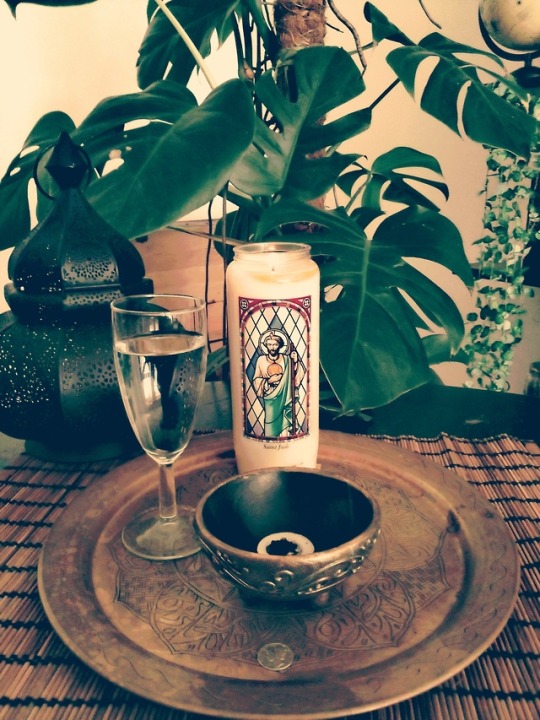
🌿 🍍 💲 Thanks to him 🌿 🍍 💲
#saint jude#saint#saints#prayer#money spells#witchcraft#witch#witches#witchblr#magick#africana#afromagic#desert witch#africanwitch#french witch#afro witch
71 notes
·
View notes
Text

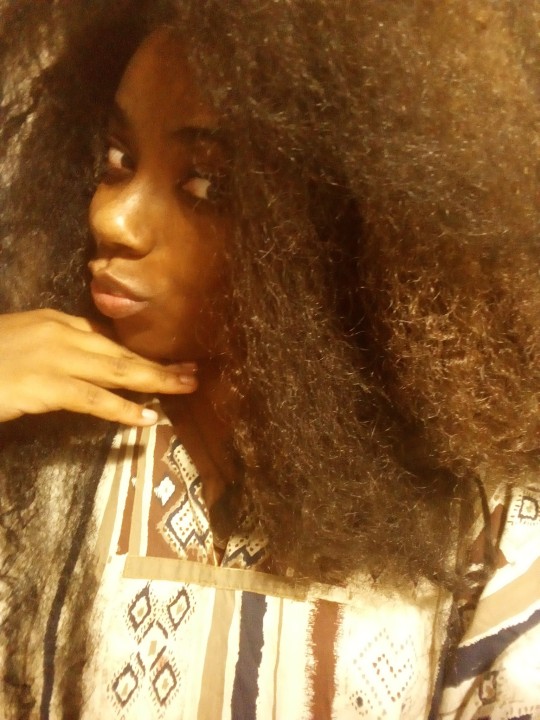
1 note
·
View note
Text
Afro-Magic Tips
Stop looking for "fakes" and start asking nuanced clarifying questions, respectfully correcting misinformation, and confronting your own biases and inability to think pluralistically.
You will find that there are very few fakes at all. Just people that practice different from you, and people that were legitimately confused that you can set on the right path.
14 notes
·
View notes
Text

I’m so excited to finally share with yall what I’ve been up to! I’ve had a bunch of requests for access to my new site while I was still working on it, and now it’s finally ready and open for yall to check out at SpiritRoots.co
Yes, I’m joining the exodus from Tumblr (well, kinda) and moving my main hub over to WordPress. While pulling several all-nighters during Kwanzaa and the first few days of 2019, I’ve been writing and researching to create lots of brand new content about hoodoo and African traditional religions. Check it out...
New Content, Posts, & Tutorials
HOODOO BASICS - An overview of what hoodoo/rootwork is, where it came from, who can practice it, and guides for avoiding any cultural appropriation of this closed tradition.
THE HOODOO LIBRARY - A growing collection of tutorials, recipes, directories, and databases of information on everything from traditional Southern black belt hoodoo to modern urban rootwork. All content within the Library is created by and for black rootworkers, and it is passcode protected for only people of African descent to have access.
ATR GUIDE - Tutorials and articles about African and Afro-diasporic spiritual and religious traditions including book recommendations, information about different ATRs, and how to get started with Orisha traditions.
New Year, New Goals
I’d like to share some of my new year’s resolutions, which really embody the direction I’m planning to take going forward...
>> New home base. I’ll be publishing all my original content at SpiritRoots.co (WordPress). This Tumblr blog will remain open for now as an archive and a platform for answering questions and providing free readings, but otherwise, I want to really make the shift over to WordPress as much as possible.
>> Protecting traditions. I will try my absolute best to avoid posting content with enough specificity that might enable anyone to appropriate traditions that are closed to them. The Hoodoo Library is passcode protected for this reason.
In the past, I’ve been an advocate of publishing tutorials with appropriation warnings, but I’ve come to realize that’s not enough. I have been deleting my old hoodoo tutorial posts from Tumblr, and I am actually really glad that most of the links from my old Hoodoo Masterpost are no longer working.
>> Vetting sources. I have always tried to be careful and mindful of who I reblog and cite, but I had no idea until recently just how many appropriative and racist sources were slipping through my own filters. I will work even harder going forward not to source information about Africana traditions from nonblack practitioners and/or racist and bigotted practitioners.
Please let me know if you have thoughts, suggestions, or questions! Though it’s a bit belated, Joyous Kwanzaa and Happy New Year to yall (:
#spiritroots#hoodoo#rootwork#conjure#africana#africanatraditions#atr#adr#wordpress#tumblr#african#africanamerican#hoodoomagic#afromagic#lucumi#lukumi#orisha#orishas#palo#vodou#voodoo#vodun#westafrican#divination#mojo#mojobags#hoodoolibrary#spiritrootshoodoolibrary#kwanzaa#umoja
248 notes
·
View notes
Video
Afro dance freestyle Music by @moris.beat @reymond_daedae @gervi_theejoker @amasha_zm @zambiantv @magic_bluster #AfroMagic (at Cosmopolitan Mall Makeni) https://www.instagram.com/p/B5YXbeAhyVv/?igshid=1o999g1qbp6a8
1 note
·
View note
Text
tbh, I think white people are not even able to practice hoodoo in a technical sense.
hoodoo is liberation magick carried in the DNA of African Descended people
you can do the recipes, you can learn from books or teachers, but unless you got that diaspora blood flowin, you’re just doing folk magick (tho you can appropriate recipes that are directly associated with hoodoo)
this isn’t anything I’ve been told, this is just what I keep feeling in my bones when I meet with my ancestors, when I think of recipes, when I recall my genetic memory. I’m not the definitive expert, but I’ve been learning a lot from my ancestors, from sensations I get when I work recipes or talk to the wind. Hoodoo has European & Indigenous influences, it has variances all over the regions & families in which it’s been practiced, but what makes it hoodoo and not some other form of folk magick, is the African Ancestral link.
As a biracial black person, I was led to hoodoo after years of feeling out of place in pagan (European centric) magick practices. I was extremely uncertain of my ability to practice it, being the child of one white parent, but during the time of uncertainty, my connection to my black ancestors strengthened. They started talking to me louder and louder. I feel these experiences to be my truth.
It was born out of the need for liberation. The magick in the DNA of the diaspora kept us alive. It’s strong.
18 notes
·
View notes
Photo
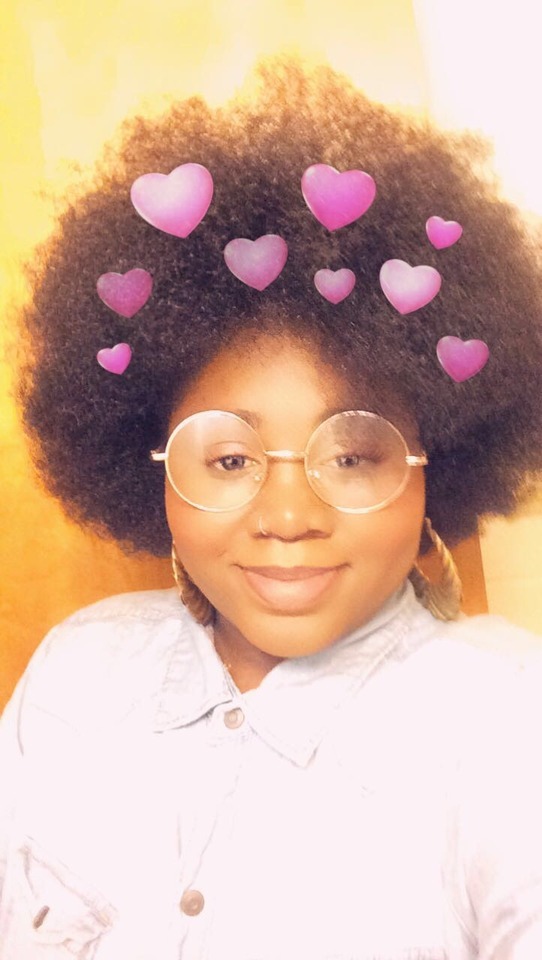
“50 told me go ‘head switch the style up and if they hate then let’em hate and watch the money pile up ,good life “
9 notes
·
View notes
Photo

Happy Daddy's Day to my Daddioo! Life is a whirlwind of moments & together they create memories. Happy, sad and some are just funny, crazy & mad 😍😒🤪🤩😎 We certainly know how to have fun & even though you were MIA growing up, look what you created and look at the fine human beings we have become. We are bloody amazing.. not guna lie 😅🤣😂 So I bless this day with our love & look forward to all being together very soon and laughing & loving over a plate of grub, pirate style drinks, and a one leg skank surrounded by nature! Here's to my Dad 😎💜👽💛👻💚🦁 Bless Up, Rise Up, LOVE YOOOU 🥰😝 #HappyDaddysDay #DaddiesGirl #WeBAliens #CosmicCreatures #ItsMelanin #HappyDays #NatureFolk #AtOneWithNature #FireySpirits #FullofEnergy #StLucians #CaribbeanVibes #ColourfulSpirit #DonDNA #AfroMagic #Dredlocks #CurlyTops #MomentsAndMemories (at London, United Kingdom) https://www.instagram.com/p/CBslmmWHwWJ/?igshid=eo7nvmq4uv8v
#happydaddysday#daddiesgirl#webaliens#cosmiccreatures#itsmelanin#happydays#naturefolk#atonewithnature#fireyspirits#fullofenergy#stlucians#caribbeanvibes#colourfulspirit#dondna#afromagic#dredlocks#curlytops#momentsandmemories
0 notes
Text
" Ima bruja , Ima Bruja and ima dress in all white -
Orisha My Altar "
Princess Nokia
1 note
·
View note
Photo

Afro Magic . . . #afrohair #afro #afronation #afropunk #afronation #afrolove #naturalhair #naturalhairstyles #naturalista #afromagic (at Above the Clouds) https://www.instagram.com/p/B7ERz0jgAuV/?igshid=11ddg10798bfu
0 notes
Photo
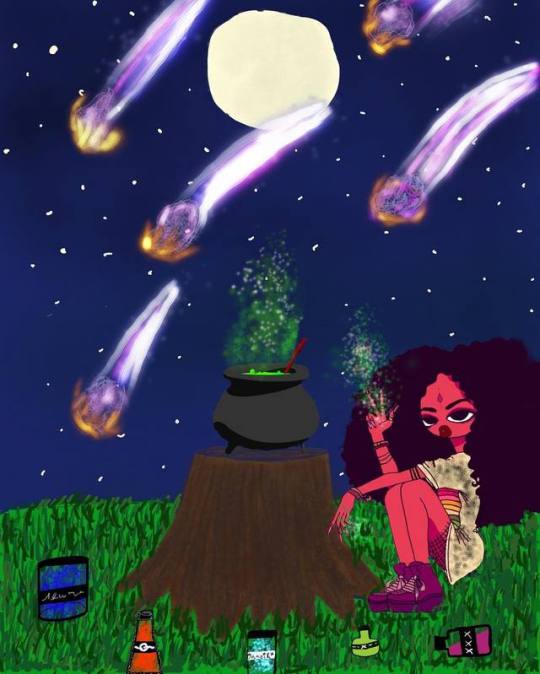
Midnight Spell Casting ✨☄️
#midnightspellcasting #art #cartoon #drawing #animations #hoodwitch #meditation #forrest #blackgirlmagic #afro #afromagic #spells #midnight #moonpower #tumblrart #tumblr
https://www.instagram.com/p/BwqS-GRgt96/?utm_source=ig_tumblr_share&igshid=17oigrum51fb8
#midnightspellcasting#art#cartoon#drawing#animations#hoodwitch#meditation#forrest#blackgirlmagic#afro#afromagic#spells#midnight#moonpower#tumblrart#tumblr
0 notes
Photo
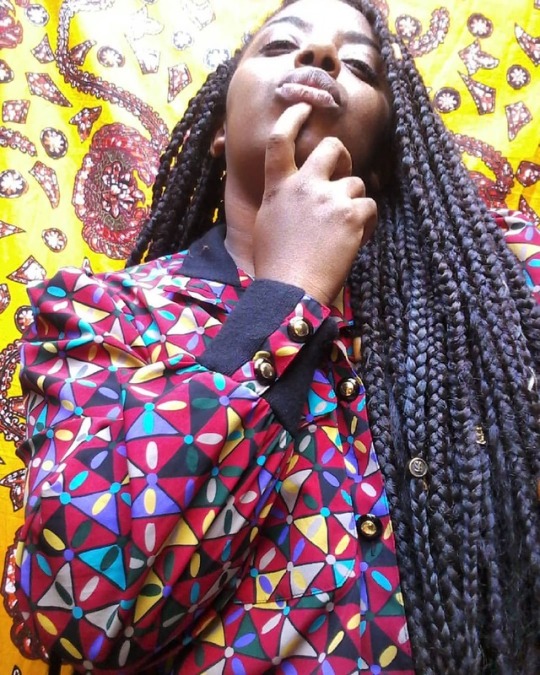
Afrovintage! Eu nunca fui a mina da perifa com estilo shortinho e blusinha c barriga de fora , ñ gostava de chamar atenção p nada no meu corpo, pq minha bunda sempre chamou atenção por si só, e eu odiava isso. Me tornei uma mulher adulta que aprendeu a gostar do seu corpo aos trancos e barrancos, que percebeu nas roupas, uma maneira de brincar com o que tinha e ainda ter estilo! 🎒💼👙👓 #afromagic #preta #empreendedora https://www.instagram.com/p/Bmt0n6tHAKMRDm3t9Mv6FMGMnm32XwEAbhuCYE0/?utm_source=ig_tumblr_share&igshid=1m51186xee9h2
1 note
·
View note
Text
Afro-Magic Tip
If any of you are like me, you have a magical tool that requires your own energy to charge it, for whatever reason. You may also adorn your body with said tool, so it can continually absorb your own energy. Calm down, this isn't a post telling you not to do that, i just want to tell everyone to think carefully, because this does carry risk.
One of my tools serves as sort of a subtank for my energy. If I'm ever in a situation where I need a bit of energy for something, but am unable to draw upon my own (this happens to me quite often, especially when I'm sick), I just tap into my tool's reserve. The problem is that it's constantly absorbing my own excess energy. What I discovered not too long ago is that this means that my own energy control is "weaker" while I'm wearing the tool, because I don't have as much energy to draw from. The change is quite noticeable, but I personally don't see the cost as outweiging the benefit. I'm not everyone, however. Some of you may decide that having even the smallest alteration to your control outweighs the benefit of an extra energy store. In which case, a different charging method may be better.
Another problem I've encountered is that of imbalanced energy. The tool in question would repeatedly absorb excess energy from myself that I did not intend it to. This energy was inherently malevolent in nature, and directly contrasted with the type of energy that I needed the tool to store. If I were giving off that energy long enough, eventually it would take over the tool entirely. Regular energy maintenance is crucial. Constantly monitor your own energy as well as what's going in the tool.
Finally, keep in mind that any object so heavily drenched in your own energy may make you susceptible to outside forces. Be careful of who has access to the object and of who can tap into and sense its energy.
These are the two biggest problems that I've encountered, but I'm sure there are others. There's a lot of benefit to having a tool that constantly absorbs your excess energy, but it's up to you to decide if that benefit outweighs the risk.
5 notes
·
View notes
Text
Eurocentric Standards & Racist Criticisms of Magic
Alright yall. So I know it’s not just me, we’ve all seen a lot of back and forth on our dashes lately about a number of different topics such as...
What “counts” as real witchcraft, spells, magick, or magic vs. “wishing” or beginner nonsense?
How do we personally define multidimensional terms like “religion,” “intent,” and “witchcraft”?
How do these and other terms pertain to what we do as witches, chaotes, and/or magic(k) practitioners?
Who can use which terms and in what ways such as “sigils” and “spells” for certain activities?
There’s a lot of conflicting answers to those questions in our community. It’s important because the answers can have very big implications for how we view and treat each other. People are entitled to their own opinions and personal beliefs about definitions, techniques, and methodology, but I want to address the specifically racist, Eurocentric bullshit that underlies some of what I’ve seen in discussions about these topics.
Telling us that you look down on our forms of traditional and indigenous magic (or don’t even consider it to be magic at all) just because our methodologies and our practices don’t conform to Eurocentric standards is racist.
It is racist to try to judge the magic methodology and practices of non-Eurocentric magic traditions by Eurocentric standards. And if you’re not part of and well studied in a magic tradition, I’m not sure what right you have to judge it even by its own standards either. In other words...
If you aren’t an initiated bruja, don’t presume to judge the methodology or technique quality of an initiated bruja.
If you aren’t a rootworker or hoodoo doctor, don’t be comparing what we do to chaos magick or any other tradition in terms of standards or effectiveness.
These are just concrete examples, but this goes for any non-Eurocentric magic tradition and honestly, probably also for any magic tradition in general because
if you don’t practice it and you aren’t well versed in it, how do you expect to make a reasonable critique of it?
On a more personal note, I do not study or practice traditional European or American witchcraft, chaos magick, ceremonial magic, or any other Western magic tradition. I don’t practice witchcraft either, which is not inherently “European” necessarily - I understand that people from all different cultures and backgrounds refer to their craft as witchcraft and I support that. In the way that witchcraft is a very diverse and inclusive term, it has become a global concept and at all not one that refers only to European traditions.
But it’s true that “witch” and “witchcraft” are English words, not the indigenous terms for what I do, and they are terms that don’t feel to me personally like they represent or embody anything in my craft, especially given their connotations in the cultural context of Africana traditions.
So it does not make sense to judge or scrutinize any of my techniques or what I do by the standards of chaos magick, witchcraft, or any other tradition that I do not practice or study at all.
I am a rootworker and Iyami Aje, and I don’t conform to Eurocentric standards of magick on purpose.
#eurocentricism#racism#rootwork#hoodoo#brujeria#bruja#afromagic#afrocentric#discourse#magiccommunity#witchcraftcommunity#witchcraft#magick#magic#discussions#indigenous#indigenouspractices
1K notes
·
View notes